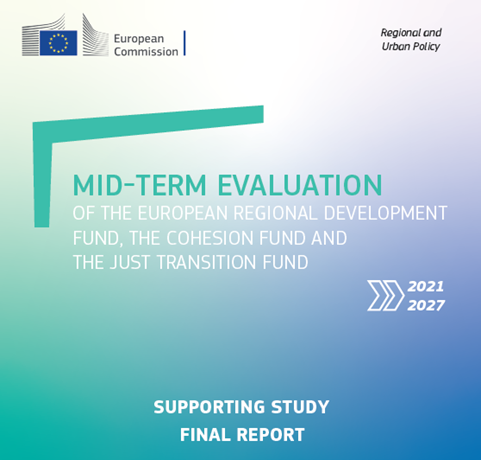Cohesion Policy post-2027: What Experts Really Told Us — Insights After the t33 Workshop
DEC 2025

Publishing 03 November 2025
In October, the European Commission published the Mid-term Evaluation (MTE) of the Cohesion Policy funds for the 2021–2027 programming period, covering the European Regional Development Fund (ERDF), the Cohesion Fund (CF), and the Just Transition Fund (JTF). The evaluation aims to assess progress to date, examine the uptake of key legal novelties, and reflect on the implications of recent contextual and regulatory developments.

The evaluation is based on two complementary workstreams: an internal analysis led by DG REGIO, and a supporting study led by t33, in partnership with Spatial Foresight and ÖIR. The latter study focuses specifically on the design, programming, and early implementation of the three funds. Alongside the ex post evaluation of the 2014–2020 programming period, the MTE informs the wider policy discussion about the future of EU funding, particularly in anticipation of the Commission's upcoming proposal for the 2028–2034 Multiannual Financial Framework (MFF).
The MTE assesses how cohesion policy has responded to evolving challenges and whether the current framework is delivering on its promises. The evaluation applies five core criteria, in line with the Common Provisions Regulation and the Better Regulation Guidelines. It covers the three funds in all 27 Member States, across all categories of regions. Below, we will touch on each of these criteria to provide an overview of the conclusions:
Effectiveness: Implementation started slowly (including due to exogenous factors, including ramifications of the COVID-19 crisis and Russia’s war against Ukraine), but accelerated in 2024; however, progress remains uneven among Member States and POs. Territorial effectiveness, while generally supported by multilevel governance, depends strongly on local administrative capacity and coherent, integrated strategies.
Efficiency: Simplification and clearer enabling conditions have reduced administrative burden and improved programme management, yet uneven uptake of tools like SCOs and FNLC, persistent capacity gaps, and fragmented data systems continue to limit performance, flexibility, and the full realisation of efficiency gains.
Coherence: Coordination with other EU instruments has improved, particularly with Horizon and the Recovery and Resilience Fund, while alignment with EU priorities – especially climate and DNSH – is strong, though challenges persist in ensuring strategic consistency, avoiding duplication, and managing capacity across instruments.
EU added value: The ERDF, CF and JTF deliver clear European added value by ensuring long-term and additional investment, strengthening multilevel and place-based governance, building administrative capacity, and supporting shared European public goods such as climate action, connectivity and digital transformation.
Relevance: ERDF, CF and JTF programmes are strongly aligned with EU policy goals, territorial disparities and the Semester recommendations to some extent, while the 2025 mid-term review allows adjustment to emerging priorities.
If you are interested in exploring the evaluation in greater depth, the full report offers a detailed analysis of the findings, as well as more comprehensive conclusions and lessons learned. You can access the complete study here → Mid-term evaluation of the cohesion policy programmmes 2021-2027 financed by the ERDF, the Cohesion Fund and the JTF
DEC 2025
NOV 2025
OCT 2025
JUN 2025
MAY 2025
MAR 2025